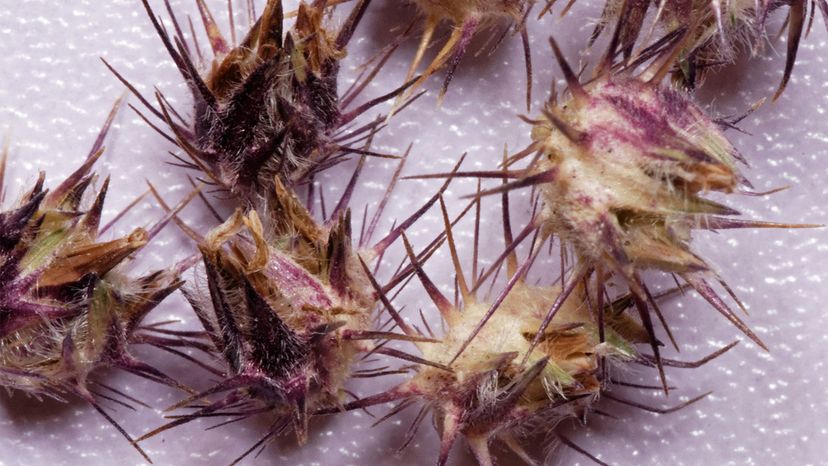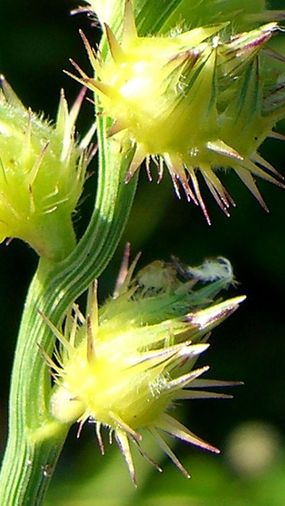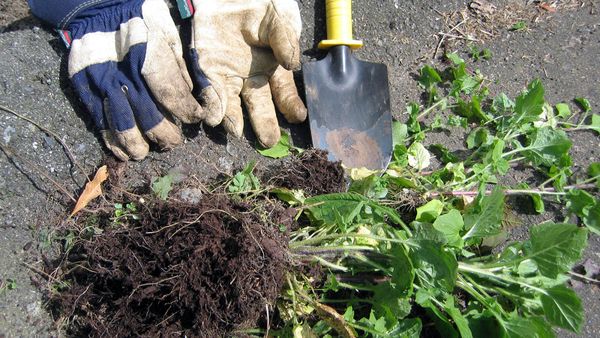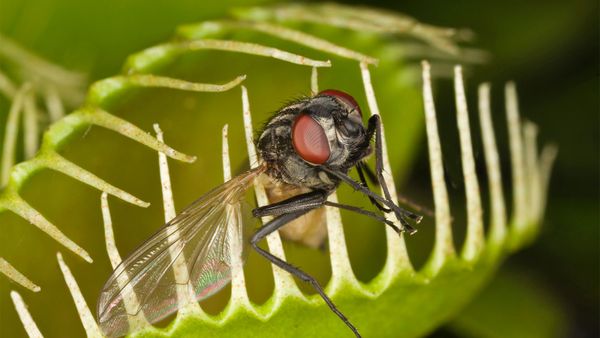
Not everybody agrees on what constitutes aweed, but it's generally agreed to be a plant that people don't want around. Some people love thistles and dandelions, while others can't abide them in their yards. Sandspurs, though, are pretty universally reviled — nobody likes agrassthat bites.
Grown men and children alike have been known to freeze in place when they find themselves in a sandspur patch. You can't move forward and you can't move backward without getting hopelessly covered in thorny, sticky balls of pain. Heaven help you if you just give up and sit down to cry, because you will regret it.
Advertisement

Sandspurs — also known as sandburr, burgrass or buffelgrass — are a group of grasses from the genusCenchrusthat can be found in Asia, Africa, Australia and the Americas. In the U.S., the sandspur is被认为是an invasive weed and occurs throughout the Southern states. In the cooler seasons, it's tough to tell the difference between sandspurs and the other grass species in fields and yards. But in warm weather they start to flower and seed — and this is when the trouble starts.
All species of sandspurs produce small, thorn-coveredburrs. The plant evolved these spines as a mechanism to protect their seeds and also to allow them to hitch rides from animals. But they're also unbelievably painful to step on and difficult to remove from clothing, pet fur and sometimes even your own skin. They can also be dangerous for grazing animals — some species, such asCenchrus echinatus(Southern sandbur), the species native to the southeastern U.S.,can causechronic kidney disease in horses if it's ingested over an extended period.
Sandspurs love dry, sandy soils but can adapt to other types of soil as well. In warm climates they begin germinating in late spring and will continue until the first frost. If you have sandspurs in your yard, it's important to identify the plants before they flower andremove them, or start treating the areas where they've taken hold with anherbicide, which will be safe for the turf grasses in your lawn, or a spray bottle full of white vinegar, which will kill most plants it comes in contact with.
If you happen to be walking in an area where there might be sandspurs, it's a good idea to wear close-toed shoes and long pants. It's also a great idea to carry around a pair of needle-nose pliers or tweezers for easy removal. Once you pull the body of a sandspur out of your foot, a spike or twomay remain— try soaking the foot in warm water to soften the skin and then work the spike out with a needle or tweezers.
Be careful out there!
Advertisement





